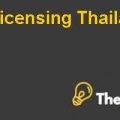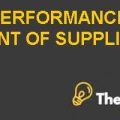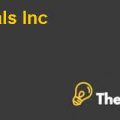Investment Portfolio Management Assignment Case Study Solution
- How the Above Mentioned Performance Measure is calculated:
- The Sharpe Ratio:
The Sharpe ratio is calculated subtracting the risk free rate i.e. interest rate on bond and t bills from the return on portfolio. This excess return is than divided by the total risk of the portfolio i.e. standard deviation of the portfolio which provides us with the Sharpe ratio. Portfolio with the highest Sharpe ratio is considered as the best portfolio among other portfolios.
The formula for Sharpe ratio is: Sharpe ratio = (return on portfolio – risk free return)/standard deviation of the portfolio.
- The Treynor Measure:
The Treynor measure is calculate in a same way as the Sharpe ratio but the only difference in the calculation of Treynor measure is that, instead of considering the total risk in the calculation which is standard deviation of the portfolio the Treynor measures consider the beta which is systematic risk or market risk. Hence, portfolio with highest Treynor measure is considered as the best portfolio in comparison with other portfolios which also used Treynor measure.
The formula for Treynor measure is: Sharpe ratio = (return on portfolio – risk free return)/beta of the portfolio.
- Jensen Alpha:
The Jensen alpha is calculated by subtracting the CAPM which is the market return from the realized portfolio return. Hence, Jensen alpha either exceed or not exceed the market return.
The formula for calculating the Jensen Alpha is: Jensen alpha = realized return of the portfolio – CAPM, Rp - ( rf + B ( rm – rf ) ).
- Risk Assumed in Relation with Return in Each Measure:
- The Sharpe Ratio:
The risk assumed in the Sharpe ratio is the Total risk which consist of systematic risk and unsystematic risk. This total risk is also called the Standard deviation of the portfolio. The systematic risk is also called beta which is considered as the market risk which cannot be further diversified away. The unsystematic risk is the company specific risk that can be diversified away by increasing the quantity of securities in the portfolio managed.
The general perception of the risk and return is that the greater the risk the greater the return. Many portfolios can be created with high risk and high return but the best portfolio among them can be identified by the higher Sharpe ratio which provides us with the information of high return and low risk among the high return and high risk portfolios i.e. lowest possible standard deviation at highest possible return. Sharpe ratio explains excess return per unit of total risk.
- The Treynor Measure:
The risk which is assumed in Treynor measure is the beta which is also known as the market risk. This systematic risk is the market risk which cannot be further diversified away by increasing the number of securities in the portfolio.
The excess return after deducting the risk free rate in Treynor measure is than divided by the beta which is the market risk. Therefore the greater the Treynor measure the greater will be the profit because of increased excess return. It explains excess return per unit of systematic risk.
- Jensen’s Alpha:
The risk assumed in Jensen alpha is the unsystematic risk which is also considered as the company specific risk. The company specific risk can be diversified away by adding or increasing the number of securities in the portfolio.
Jensen’s Alpha is estimated by deducting the market return from the realized return on portfolio. The measure of risk considered in Jensen’s alpha is market risk. The retur.........
This is just a sample partical work. Please place the order on the website to get your own originally done case solution.







